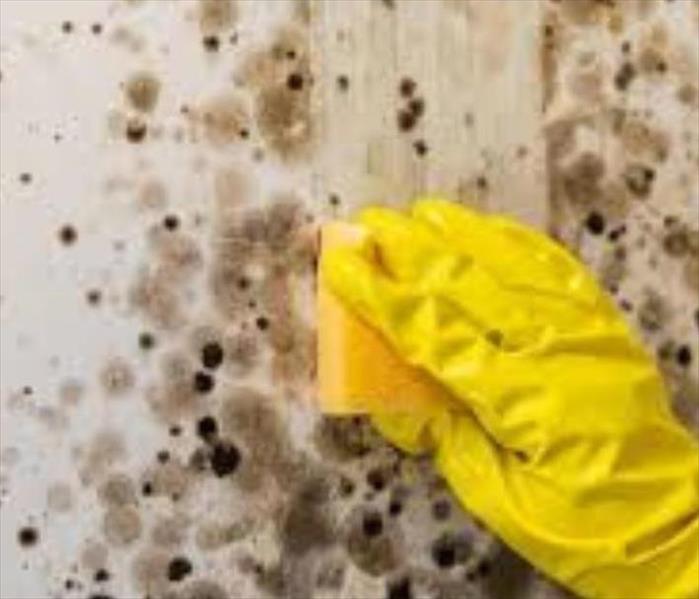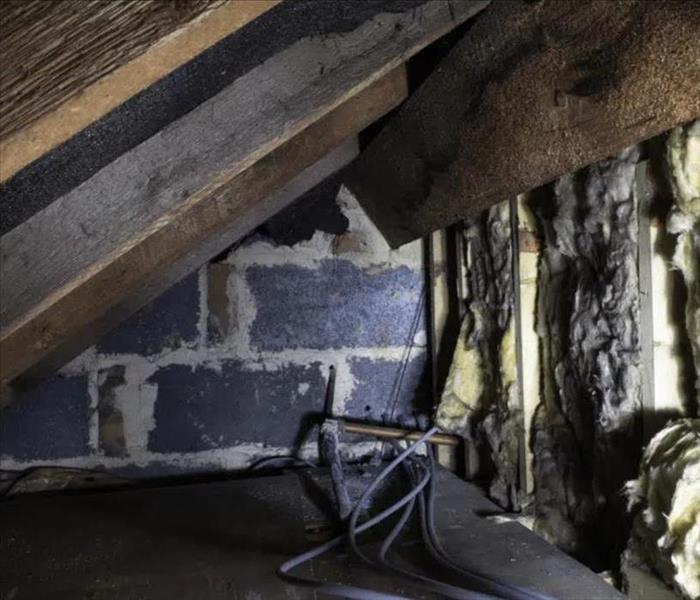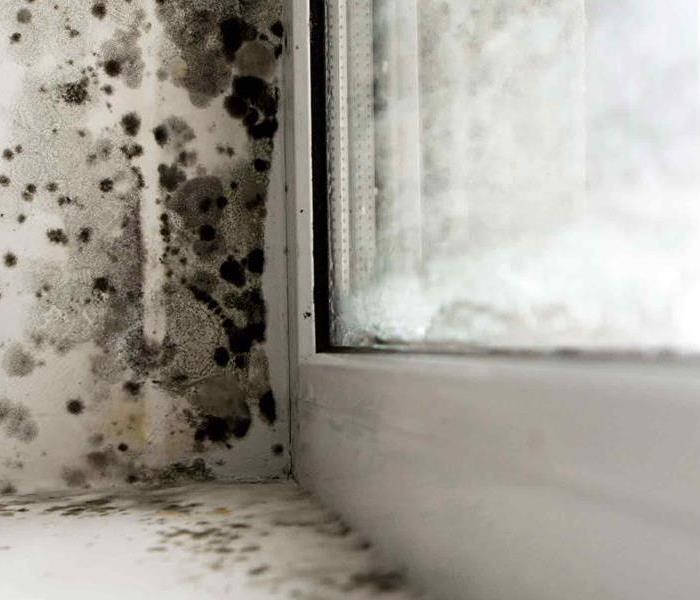Archived Mold Remediation Blog Posts
What Is Mold
4/25/2024 (Permalink)
 black mold around window
black mold around window
When your business develops a mold problem, it can be an unsightly nuisance that can make your place seem less than clean. Depending on the source behind it, mold could also mean more serious problems that could lead to disruption in your daily business functions. Mold is a natural part of the environment, and it cannot be completely eradicated. Mold spores are present almost anywhere that moisture and oxygen are present—both indoors and outdoors. They can enter your building in many ways, including open windows, HVAC systems—even on clothing.
Any mold damage on your commercial property should be taken seriously to avoid further damage and should be remediated promptly. It only takes a few days for mold spores to thrive and spread around your business, and often begins with a musty odor in the air. That’s when it’s time to call mold remediation specialists like SERVPRO, who will assess your mold issue and work to determine the source so that damage causing mold doesn’t return.
Mold In Crawl Spaces
2/1/2023 (Permalink)
 Mold in your crawl space?
Mold in your crawl space?
What Causes Mold in a Crawl Space?
Excessive moisture can cause mold growth in your crawl space. That moisture can occur naturally from the soil and dirt underneath your home. A leaky pipe or condensation can also contribute to higher moisture levels. Without proper ventilation, moisture can build up and cause mold growth.
6 Ways to Prevent Mold Growth in Your Crawl Space
You can be proactive and prevent mold growth by taking a few precautionary steps. We’ve included six tips that can help avoid mold from forming in the first place.
Tip 1: Inspect your foundation walls.
The first step in crawl space mold prevention is to inspect the foundation walls. Look for cracks or leaks in walls, as well as holes or cracks in the ceilings. Even the smallest gap can allow moisture to seep in.
Tip 2: Check your gutters and downspouts.
You want to make sure to channel rainwater away from your house properly. If it’s flowing toward your home, then it’s a surefire recipe for mold. Ideally, you should direct water flow at least six feet from your home to prevent rainwater from pooling at or near your foundation.
Tip 3: Look for any leaks.
You might have to get your hands dirty for this one, but we recommend checking your crawl space two to three times per year. Inspect the pipes to ensure that none of them are leaking. You should also look for any plumbing leaks above ground too. Since water travels downward, a leak upstairs can easily make its way into your crawl space.
Tip 4: Insulate crawl space pipes.
Earlier, we mentioned that condensation collecting on pipes from fluctuating temperatures could elevate moisture levels in your crawl space, leading to mold. One way to prevent this from happening is to insulate the pipes.
Tip 5: Consider a vapor barrier.
Vapor barriers are unique materials that keep moisture out of your crawl space. Vapor barriers are made of a plastic or foil sheet designed to resist water through the floor, ceiling, wall, or roof. They prevent both the invasion of moisture and the condensation on surfaces.
If you already have a vapor barrier (also referred to as crawl space encapsulation), ensure you remove the original barrier to prevent odor or moisture from being trapped between the two layers.
Tip 6: Adequately ventilate your space.
Good ventilation airs out your crawl space, and in conjunction with a vapor barrier, is very effective in keeping everything perfectly dry. There are multiple ways to ventilate the area, such as:
- Divert a minimal amount of heated air from your HVAC system to the crawl space.
- Install a dehumidifier. Humidity levels shouldn’t be above 30-50%.
- Install an exhaust fan to move crawl space air outside.
- If you have a clothes dryer in your home, ensure the vent flows outside the crawl space.
Tips for mold prevention and removal
12/11/2020 (Permalink)
 Mold on window seal
Mold on window seal
Molds are quite common in our world, in buildings and homes. Mold will grow in places with a lot of moisture, such as around leaks in roofs, windows, or pipes, or where there has been flooding. Places like Oklahoma are prime areas for mold, as the temperatures fluctuate, causing humidity in our homes and businesses to build up.
Molds thrive on moisture and reproduce by means of tiny, lightweight spores that travel through the air. You're exposed to mold every day in some cases, mold can be good — it's essential in making brie and penicillin, for example. In small amounts, mold spores are usually harmless, but when they land on a damp spot in your home, they can start to grow and it can also be bad, especially when it grows undetected in your home.
Mold grows well on porous materials such as paper products, cardboard, ceiling tiles, sheetrock, and wood products.
Here are some tips to prevent mold from growing in your home or business.
- Identify problem areas in your home and correct them. If you need help identifying problems, contact our SERVPRO team and we can help diagnose the problem areas.
- Dry wet areas immediately.
- Prevent moisture with proper ventilation throughout, under (if you have a crawl space) and in the attic space of your home.
- Equip your home with mold-resistant products.
- Monitor humidity indoors. The ideal relative humidity for health and comfort is somewhere between 30-50% humidity, according to the Mayo Clinic. Indoor thermometers with humidity scale are an inexpensive way to keep an eye on humidity levels.
- Direct water away from your home to keep moisture form collecting under your house.
- Clean or repair roof gutters that may be holding water or allowing water to get under your shingles and seep into your home’s attic.
- Improve air flow in throughout your home.
- Keep mold off household plants.
- Check your HVAC vents for mold, where mold can easily grow. A quick inspection by your local SERVPRO technician can determine if you do have any mold issues. SERVPRO of Mayes and Wagoner Counites can clean your HVAC ductwork.
Remember mold can be dangerous and removal of mold should be done by licensed and trained professionals, such as your SERVPRO of Mayes and Wagoner Counites team.
And there is no one-size-fits-all solution when it comes to mold prevention. Knowing what works for your climate and your home is an important first step. SERVPRO can help to diagnose what action is needed to remove the mold and help future prevention.
If you have any questions, call your SERVPRO of Mayes and Wagoner Counites, 918-486-1055. 24/7 Emergency Response.






 24/7 Emergency Service
24/7 Emergency Service


